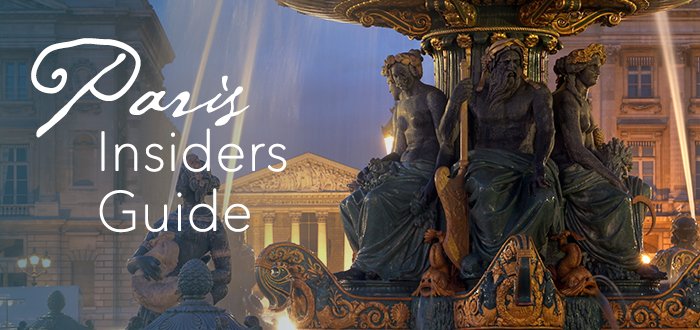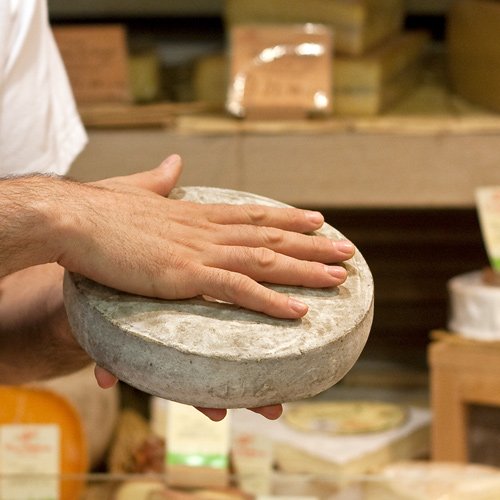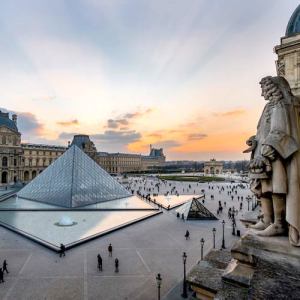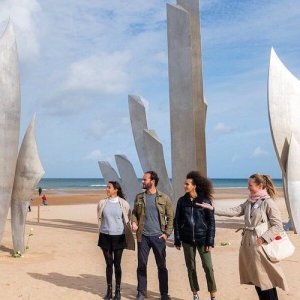Highlights Of The City Of Paris Museum Of Modern Art
It's astounding that the Musée d'Art Moderne de la Ville de Paris (the Paris Museum of Modern Art) — with its 10,000 works showcasing artistic achievements in the 20th and 21st centuries — is still a relatively hidden Paris museum gem. Tout le monde crowd Pompidou and Musée d'Orsay, ignoring this impressive museum in the shadow of the Eiffel Tower at the Palais de Tokyo.
![]()
Our Top-Rated Museum Tours in Paris
1. Louvre 2-Hour VIP Tour… This small-group option is the best experience
2. 3-Hour Louvre Semi-Private Tour… Feel like a VIP on a small group tour
3. Musée d'Orsay Impressionist Tour… The top-rated museum tour in Paris
4. The Paris Museum Pass… Free entry to over 60 museums and monuments
It Takes Two Museums
 Detail, Rythme No. 1 by Robert Delaunay
Detail, Rythme No. 1 by Robert Delaunay
Paris is so rich in art that there are two major museums of modern art found here. Centre Pompidou is the French national museum of modern art, and it's a massive, blocky complex in the Marais. It's crowded and, to our taste at least, not that attractive inside. For us, the better museum is the Musée d'Art Moderne de la Ville de Paris, the city of Paris modern art museum. It's a pleasure to visit, and it's free! Alons-y ! Come on! Let's go on a virtual tour —
![]()
Discover What's On When You're Here...
• January... |
• February... |
• March... |
• April... |
• May... |
• June... |
• July... |
• August... |
• September... |
• October... |
• November... |
• December... |
Discover What's On When You're Here
• January...
|
• February... |
• March... |
|---|---|---|
• April... |
• May... |
• June... |
• July... |
• August... |
• September... |
• October... |
• November... |
• December... |
One Artist, One Masterpiece

Donations created the backbone of the collection, with 500 pieces from a single donor — Fauvist paintings, Cubist works, and works by members of the École de Paris. The donation was also the trigger for a move from the too-small Petit Palais, where the museum was formerly located, to a much bigger space in the Palais de Tokyo along the Seine, just outside the borders of the 8th Arrondissement. It's hard not to be dazzled by works by Pablo Picasso, Raoul Dufy, Amedeo Modigliani, Andre Derain, Georges Braque, Marc Chagall, and Henri Matisse.
An important theme at the Paris Museum of Modern Art has been "One Artist, One Masterpiece". Any of these masterpieces are worth the visit and together they create museum magic.
![]()
Romantic Dinner Cruises In Paris
|
VIP Dinner Cruise with Bateaux Parisiens |
Dinner Cruise by Maxim's of Paris |
|
VIP Dinner Cruise with Bateaux Parisiens |
La Danse by Henri Matisse
 La Danse Inachevée by Henri Matisse, photo by Mark Craft
La Danse Inachevée by Henri Matisse, photo by Mark Craft
In 1930, Henri Matisse met Dr Albert Barnes, an American millionaire and modern art collector. Barnes commissioned Matisse to create a mural for his foundation and gave the artist carte blanche. Matisse chose dance, one of his favourite topics. For three years, the 61-year-old artist worked exclusively on the huge project.
It was a challenge for Matisse as he had never created such a large work. He produced three versions of La Danse — two of them are right here, in the Paris Museum of Modern Art. Matisse was not satisfied with the first version, La Danse Inachevéée (The Uncompleted Dance). He started a second version with a simplistic system of arranging cut, colored-paper pieces pinned to the canvas for easy edits. (These paintings shouldn't be confused with another set of two paintings with the same title that Matisse completed in 1909 and 1910.)
![]()
 La Danse de Paris by Henri Matisse, photo by Mark Craft
La Danse de Paris by Henri Matisse, photo by Mark Craft
![]()
Matisse finally achieved the balance he was after in La Danse de Paris. Unfortunately, the painting's dimensions didn't fit into Dr Barnes, building. So, a third version was finished and installed there in 1933. Almost sixty years later, La Danse Inachevée was rediscovered in Matisse's studio in Nice. Both of the first two versions of La Danse are now on display at the modern art museum in a room devoted to Matisse.
![]()
Top-Rated Paris Museum Tours
|
The Louvre's Greatest Masterpieces |
Musé d'Orsay Guided Tour |
|
The Louvre's Greatest Masterpieces |
La Fée Electricité by Raoul Dufy
 La Fée Electricité by Raoul Dufy, photo by Mark Craft
La Fée Electricité by Raoul Dufy, photo by Mark Craft
This huge masterpiece is worth crossing the Atlantic to see. Commissioned for the 1937 International Exposition in Paris, Dufy's mural was installed on the curved entrance of the Pavillon de la Lumière et de l'Électricité (Pavilion of Light and Electricity), on the Champ de Mars.
Dufy's instructions from the electricity company who commissioned the work were to tell the story of La Fée Electricité (The Spirit of Electricity). The composition unfolds over 6458 square feet (600 m2), and showcases the history of electricity from its discovery to its dazzling modern applications.
![]()
 Detail, La Fée Electricité by Raoul Dufy, photo by Mark Craft
Detail, La Fée Electricité by Raoul Dufy, photo by Mark Craft
![]()
The upper portion of the fresco features Dufy's favourite subjects — sailing boats, birds, and a Bastille-day celebration. On the lower half are the portraits of 110 scientists and inventors who made electricity happen. Dufy deftly blends mythology with modern day technological achievements. In the middle, the Olympian gods and the modern power station generators are connected by Zeus's thunderbolt. To the left is Iris, messenger of the gods and daughter of Electra, as she flies in light over the capitals of the world. Red, blue, yellow, and green, merge and energize this virtuoso composition.
Dufy worked quickly, and the fresco was finished in ten months. He used a special paint prepared for him by a chemist, which gave the paint a transparent quality. The monumental fresco was donated to the museum by the electric company in 1964.
![]()
Skip the Lines at the Eiffel Tower
|
Eiffel Priority-Access Tours |
Eiffel Tower Tour to Level 2 or 3 |
|
Eiffel Priority-Access Tour |
Nu Dans le Bain by Pierre Bonnard
 Nu Dans le Bain by Pierre Bonnard
Nu Dans le Bain by Pierre Bonnard
Pierre Bonnard is among our favorite, largely unsung painters. Sort of a Post-Impressionist, his colors and techniques are definitely reminiscent of the generation of painters that came to prominence just before him. Nu Dans le Bain is the most luminous of Bonnard's five variations on Marthe in the Bath. In this version, the surfaces of water, skin, tiles and the reflection from the window and floor play off each other. It's a masterful use of vertical and horizontal lines.
History of the Museum of Modern Art
 Palais de Tokyo: MAM is in the right wing, the art space is in the left. Photo, Palais de Tokyo
Palais de Tokyo: MAM is in the right wing, the art space is in the left. Photo, Palais de Tokyo
The Palais de Tokyo, home of the museum, is a magnificent example of 1930s architecture and one of the most stunning modern buildings in Paris. Built in 1937 for the World Expo (Exposition internationale des Arts et Techniques), the palace features two large wings, overlooking the Seine. The smooth, simple lines connect to a pillared portico and open onto a massive terrace with stairs descending to the river. The elegant building combines classical and modern elements with all the decorative details on the exterior. The interior was intentionally left plain and unadorned.
![]()
Experience the Splendor Of Versailles
|
Versailles with Priority Access + Gardens |
Half-Day, Skip-the-Line Tour of Versailles |
|
Versailles with Priority Access + Gardens |
![]()
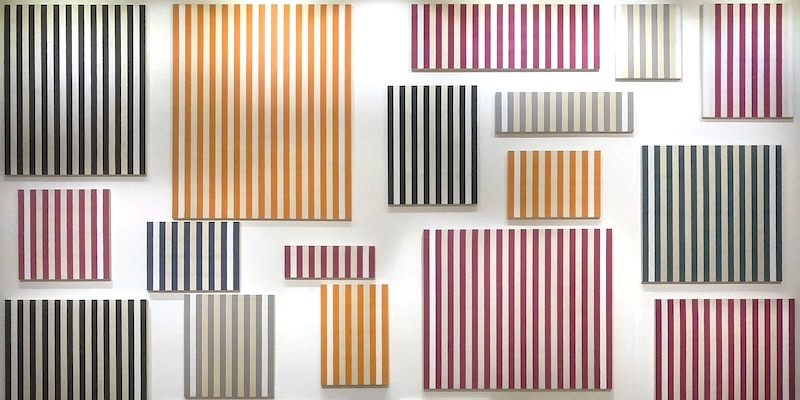 Murs de Peintures by Daniel Buren, photo by Mark Craft
Murs de Peintures by Daniel Buren, photo by Mark Craft
![]()
In 1947, the French National Museum of Modern Art was established at the Palais de Tokyo. Thirty years later, that collection moved to the Pompidou Centre when it opened in 1977. The City of Paris itself had established the Musée d'Art Moderne in 1961 and took over the space when the national museum moved out. Today it's one of the biggest museums of modern and contemporary art in France. Since 2007 another 800 works have been donated, thanks to the Société des Amis du Musée (Friends of the Museum).
![]()
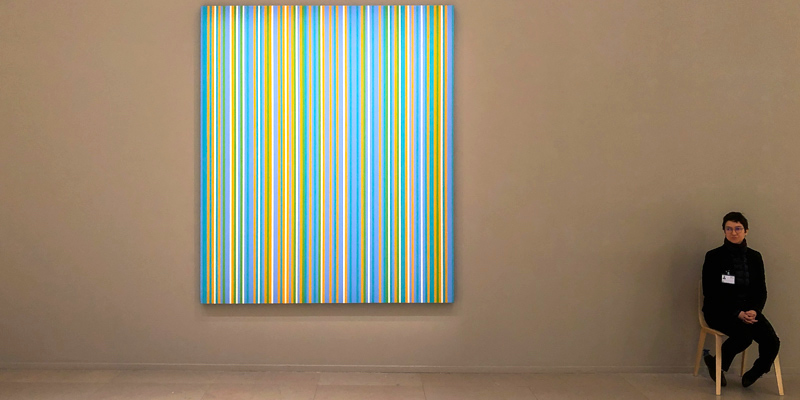 At the Musée de la Art Moderne, photo by Mark Craft"
At the Musée de la Art Moderne, photo by Mark Craft"
![]()
The Paris Museum of Modern Art shares the Palais de Tokyo with an art space for evolving works by contemporary artists. Called only "Palais de Tokyo", it describes itself as "a rebellious wasteland with the air of a Palace, an anti-museum in permanent transformation". Entrance to this half of the building is around 12€, while the modern art museum is free.
![]()
Find Hotel Deals for Your Dates in France
Check with Booking.com to find today's sale prices on hotel rooms in every village & city in France. Save 20% to 30%… or even more! |
Booking.Com France Hotel Deals |
Find Hotel Deals for Your Dates in France
Booking.Com France Hotel Deals |
Paris Museum of Modern Art – Resources
- 11 Avenue du Président Wilson
- 16th Arrondissement
- Free entrance to permanent collections
- Tuesday to Sunday – 10 to 6
- Late night Thursday until 10
- Museum of Modern Art Website…
Paris Planning Guides
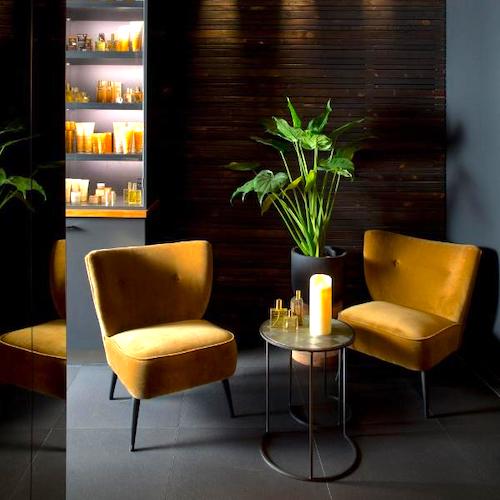 Top Montmartre Hotels
Top Montmartre Hotels |
 Paris Metro Guide
Paris Metro Guide |
 Top Day Trips
Top Day Trips |
 Skip the Tower Lines
Skip the Tower Lines |

